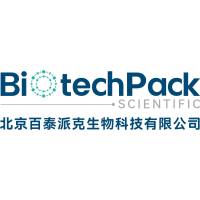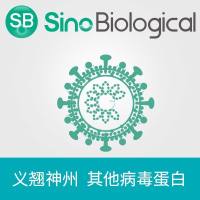Cycle Sequencing Protocol Using 33P-Radiolabeled Terminators
互联网
Extension/Termination Reactions
The following procedure requires 75-100 fmol of plasmid templates, 10-100 fmol of PCR product and 25-50 fmol of phage templates. (NOTundefined: The amount of template used should be kept to a minimum, as excess template tends to produce high background and ghost bands.)
1.Prepare the 4 termination mixes by combining 2.0ul of dGTP-termination-master-mix and 0.5ul of labeled ddNTP for each sequence.
2.For each set of sequencing reactions, label four PCR grade microfuge tubes (G, A, T, C). Add 2.5 ul of the appropriate d/ddNTP Termination Mix to each tube. Cap the tubes and store on ice or at 4℃ until needed.
3. For each set of four sequencing reactions, mix the following reagents in a microfuge tube:
Template DNA 10-250 fmol
Primer 3.0 pmol
Thermosequenase reaction buffer (10X) 2.0 ul
Sterile H2O to final volume 18.0 ul
Thermosequenase DNA Polymerase (4U/ul) 2.0 ul
4.Mix briefly by pipetting up and down.
5.Transfer 4.5 ul of the enzyme/primer/template mix to each tube containing d/ddNTP TerminationMix.
6. Add one drop (approximately 20 ul) of mineral oil to each tube and briefly spin in a microfuge.
7. Place the reaction tubes in a thermal cycler that has been preheated to 95oC and start the cycling program. It is important to preheat the thermocycler to 95℃ to prevent nonspecifically annealed primers from being extended (and thus stabilized) by Thermosequenase.
95℃for 1 min 30 sec, then:
95℃ for 30 sec
__℃ for 30 sec (sequence-specific annealing temperature)
70℃ for 1 min
30 cycles total, then 4℃
Typically, 30 cycles are used. However, if <50 fmol of template is used, up to 60 cycles may be used in order to increase signal intensity. Conversely, if more than 250 fmol of template is used, the number of cycles may be reduced to between 1 and 10. This should provide readable sequence while minimizing any background sequence.
8. After the thermocycling program has been completed, add 4.0ul of stop solution to each tube.
Sequencing Gel (5% Long Ranger Acrylamide)
21.0 g Urea
22.5 ml ddH2O
6.0 ml 10X TBE
5.0 ml Long Ranger
25.0 ul TEMED
250.0 ul 10% APS
1.Prerun with 0.6X TBE at 55W for 30 minutes.
2.To load samples on gel, heat to 70℃ for 2 minutes and quench on ice. Tap spin.
3.Flush wells to remove urea. Load samples (3.0-6.0 ul/well).
Run at 55W until xylene cyanol dye is approximately 10-12 cm from the bottom of the gel.
4.Flush the wells again and perform the second loading.
Run at 55W until the bromophenol blue dye is approximately 1-2 cm from the bottom of the gel.
5.Cool the gel to room temperature and separate the glass plates.
6.Fix the gel in 10% acetic acid-20% methanol (or 20% ethanol) for 30 min. Carefully transfer the gel to Whatman 3MM.
7.Dry the gel at 65℃ for 30-45 min. in vacuo. Remove plastic wrap and expose to film. Amersham Hyperfilm-max or Kodak BioMax work best. These films show superior sensitivity compared to Hyperfilm-MP and lower film backgrounds compared to Kodak XAR for 33P due to a single-sided emulsion with a higher silver content. The Kodak product can be processed automatically or manually and is notched to indicate the emulsion side. The Amersham product requires tank processing with 4 min development and 6 min fixing times, but may have slightly lower film backgrounds. It is also slightly more expensive than the Kodak film.








